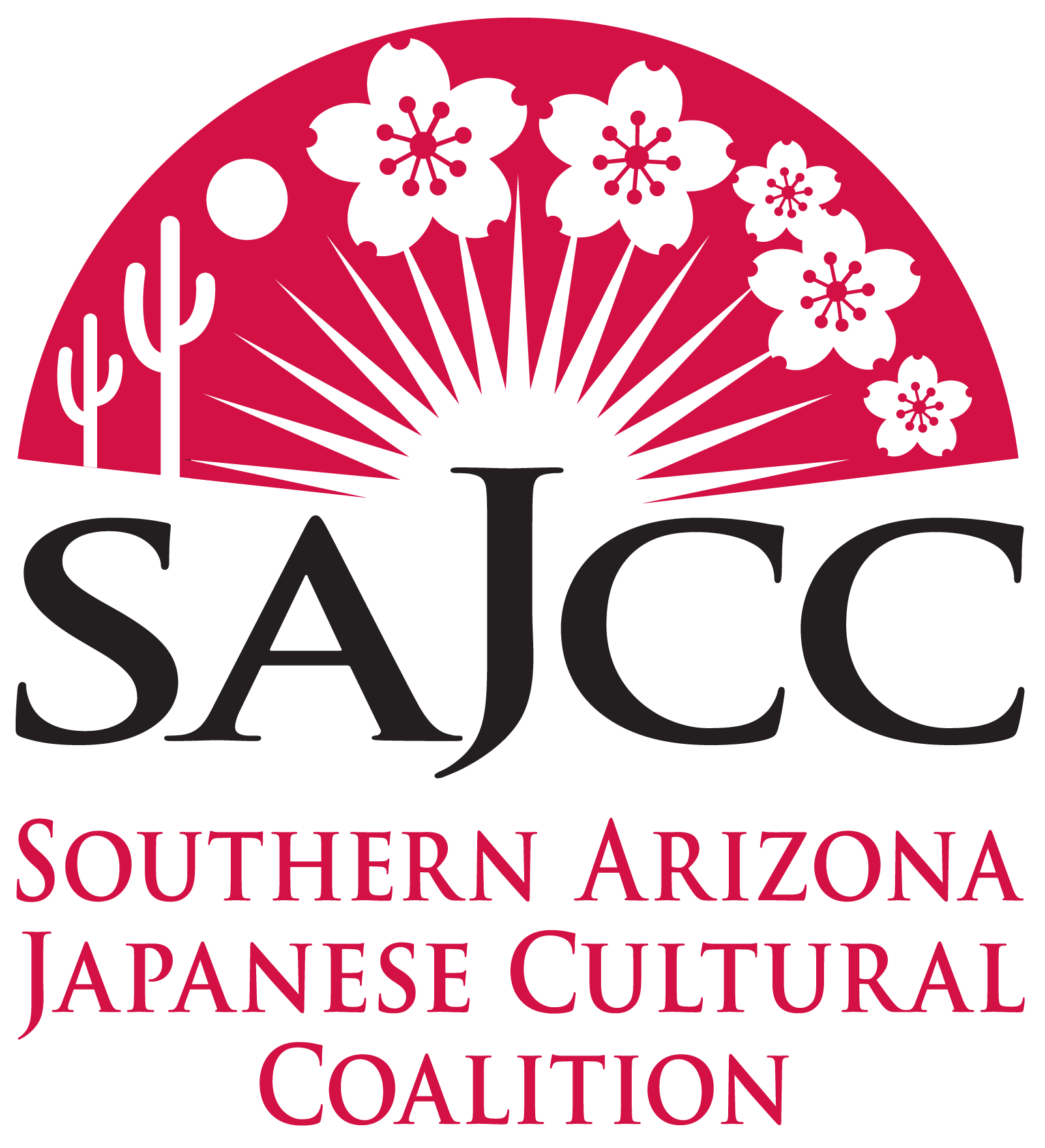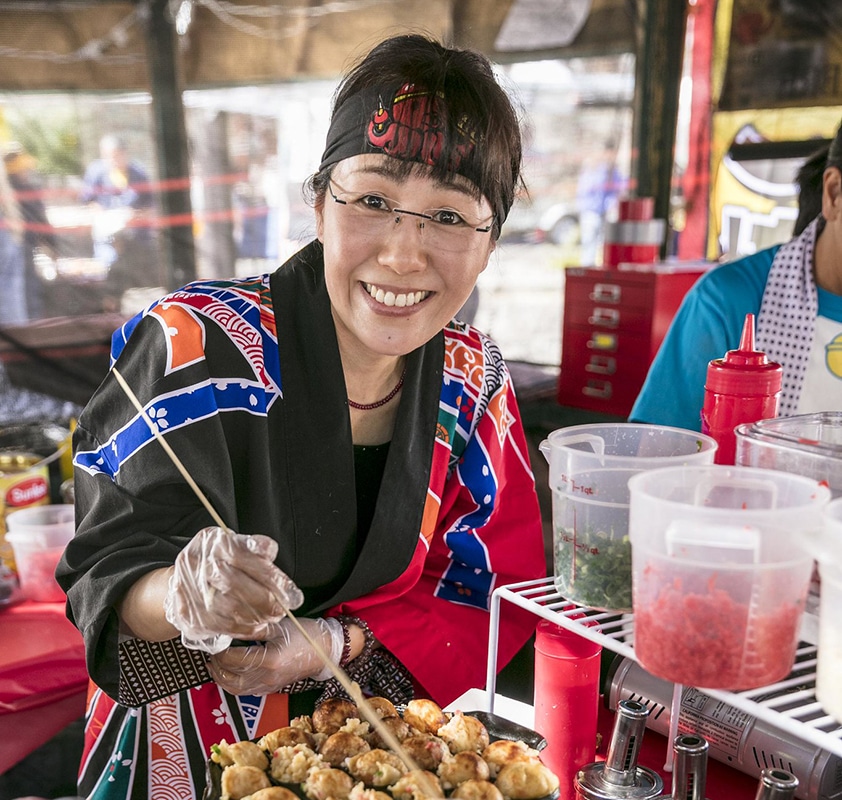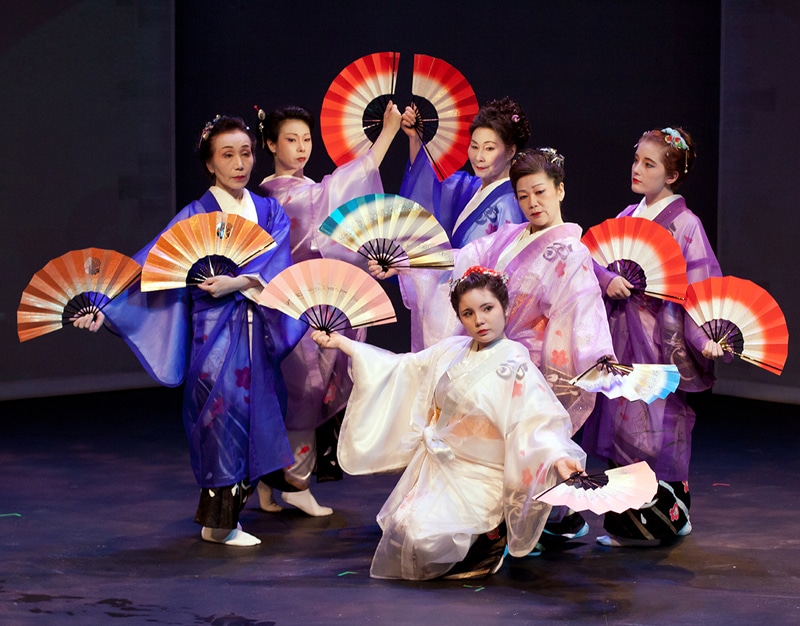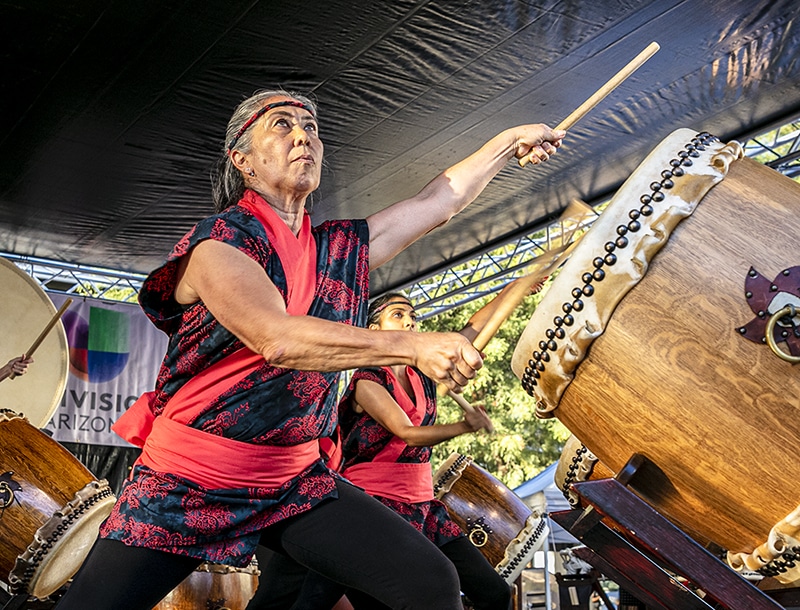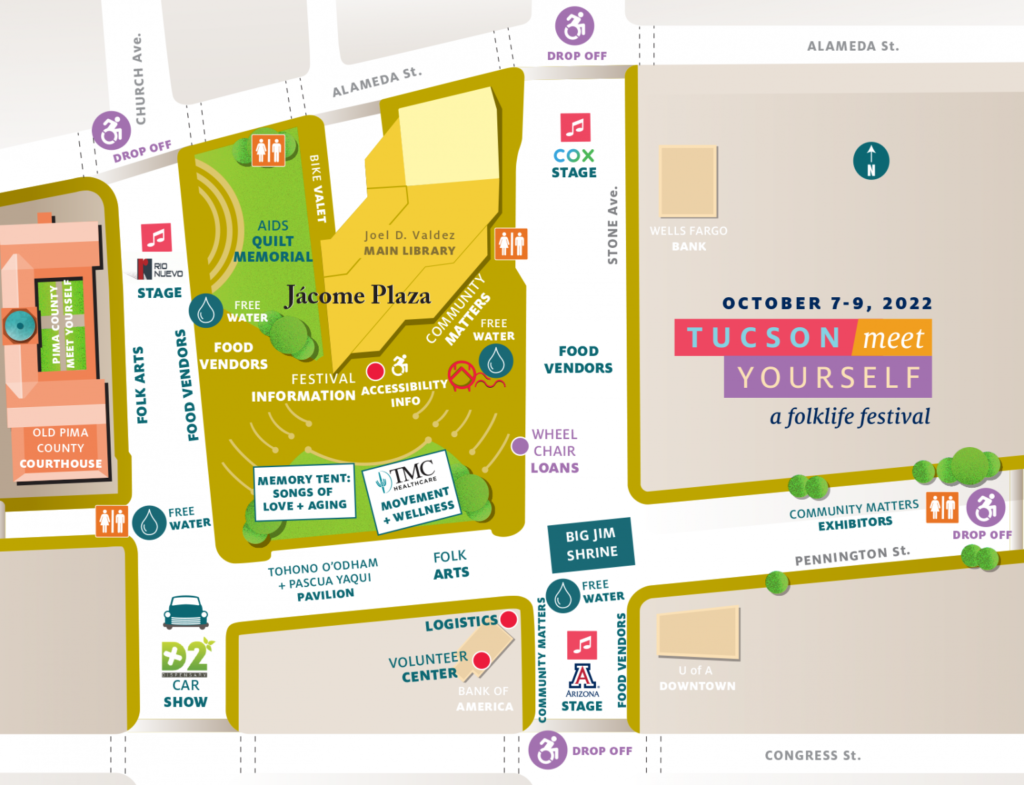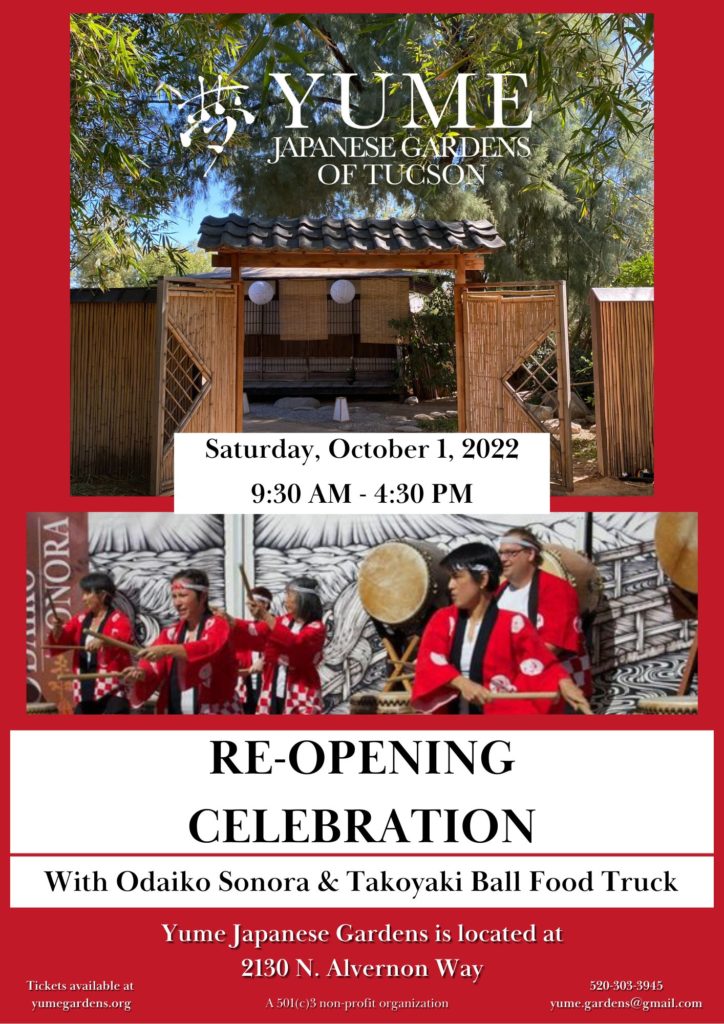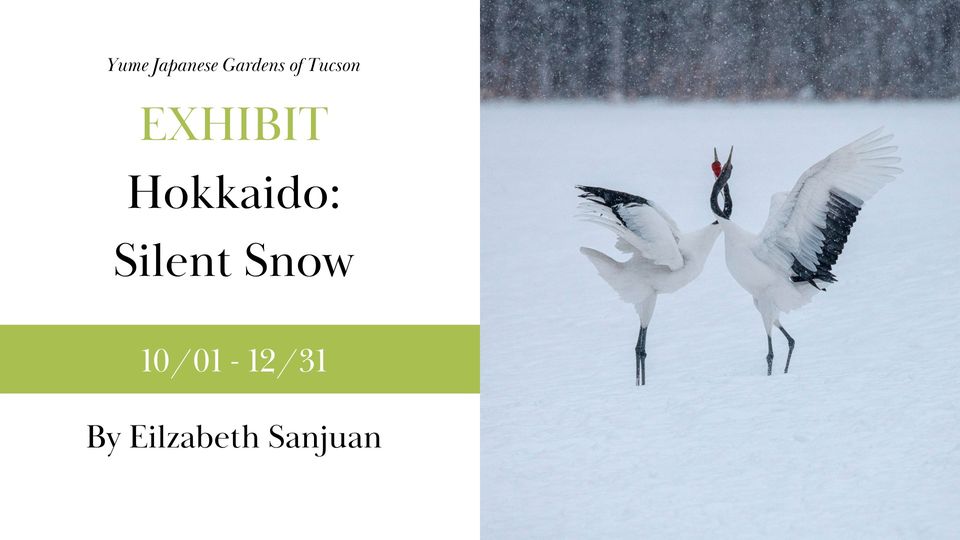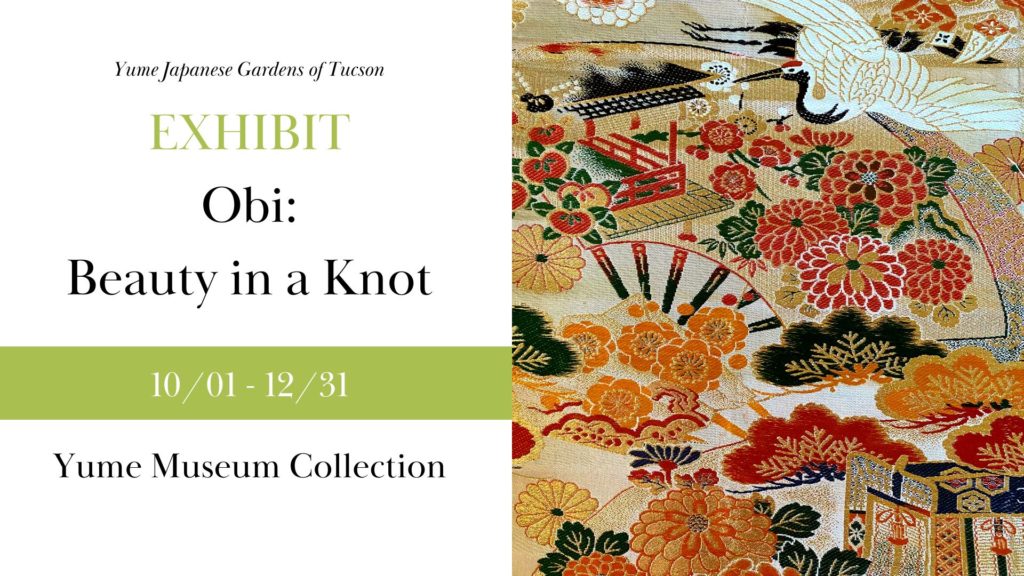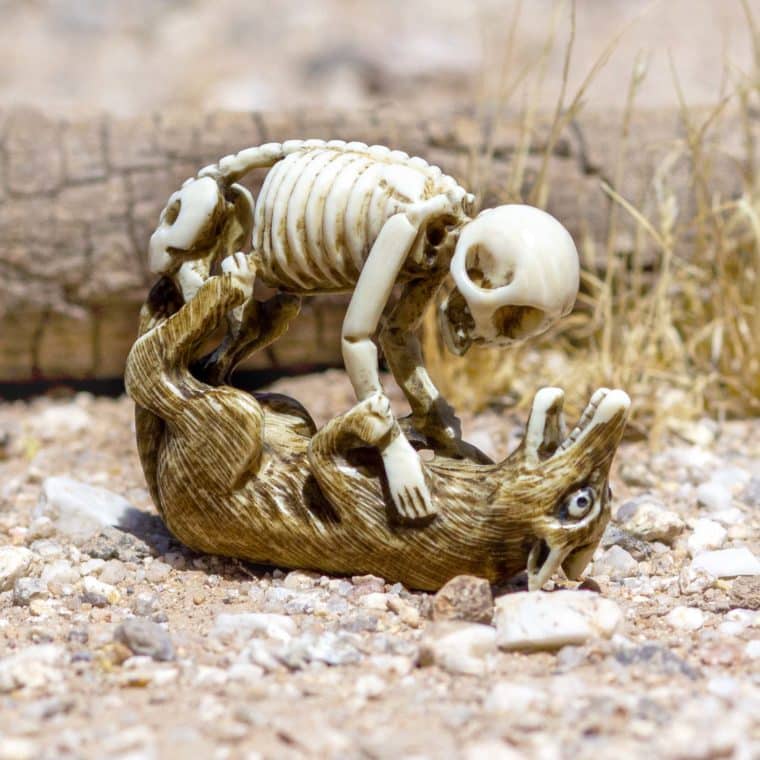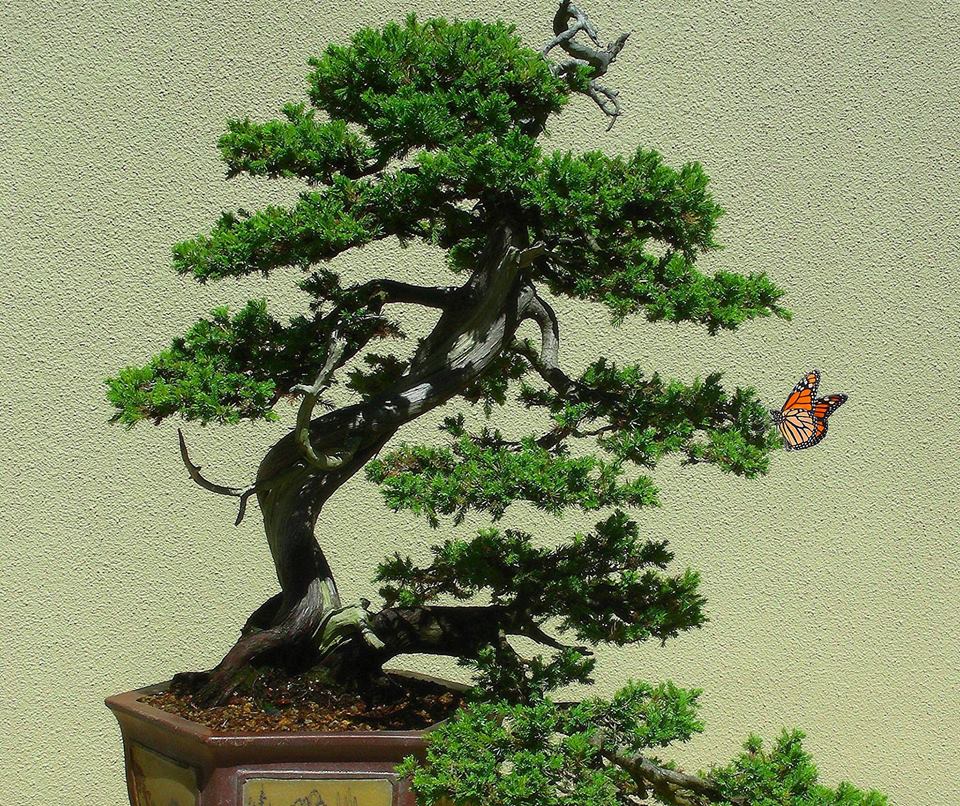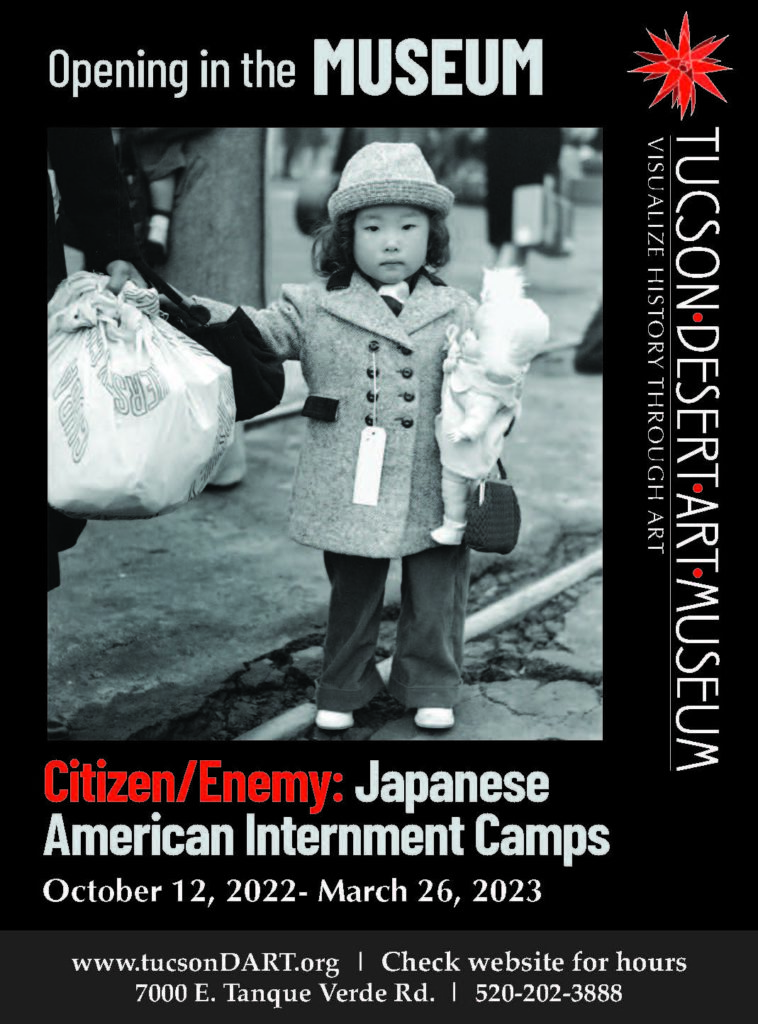
Tucson Desert Art Museum
Contact:
Krista Stoker
520-202-3888
520-771-2293 (Mobile)
mail@tucsondart.org
MUSEUM EXHIBITION OPENING IN OCTOBER 2022 EXPLORES JAPANESE
INTERNMENT CAMPS IN ARIZONA.
“Opening October 12th in the Tucson Desert Art Museum, “Citizen/Enemy: Japanese
American Internment” confronts an uncomfortable period in American history. The 1941
Japanese attack on Pearl Harbor left America in a state of paranoia and uncertainty.
Concern was voiced that American citizens of Japanese descent would have sympathies
for the enemy-at-war Japan and could transmit critical information regarding the war
effort to the enemy.
This paranoia, coupled with economic pressures, led to the 1942 Executive Order from
President Franklin D. Roosevelt which enabled the US government to relocate people of
Japanese descent to internment camps. Approximately 120,000 persons were relocated
and spent the duration of the war in poorly designed, makeshift camps, some of which
were in Arizona. When relocated, people could bring only what they could carry. They
were forced to board up their homes and leave their farms and jobs for an indefinite time.
“Citizen/Enemy” describes the tragedy of this political action and the resulting
repercussions for Japanese Americans. Large-scale images from noted photographer
Dorothea Lange, Russell Lee and others memorialize this period and offer a guide for
reflection in the exhibition. Although some reparations were eventually paid to Japanese Americans,
they were never fully compensated for their economic losses or the loss in
dignity and freedom that citizens felt during this time. Many lost their farms, homes, and
livelihoods completely due to the internment.
“As we, as a Nation, review current immigration policies and challenges to curriculum in
our education system for our youth, this exhibition provides a timely reminder that
sometimes history is uncomfortable to view, but that we can always learn from our past.”
Rhonda Smith, the Director of the Museum states. “Our Museum asks guests to visualize
history through art. This exhibition uses large photographs, installations, and historical
documents to encourage our guests to do just that: imagine that they were forced to
endure what happened during this time to Japanese Americans.”
Citizen/Enemy: Japanese American Internment opens October 12th
and continues through March 25, 2023.
An event is planned for the Day of Remembrance in February
2023.
About Us:
Tucson Desert Art Museum, 501(c)(3) organization that opened in November 2013,
presents thought-provoking exhibitions that explore the art, history, and cultures of the
Southwest and surrounding regions. The museum showcases a world-class permanent
collection of Native American textiles, western art, and artifacts, as well as special yearly
exhibitions. The facility includes a Southwestern art gallery and gift shop and plenty of
dedicated parking. The Museum offers guided tours of the permanent collection and
special exhibitions for schools, seniors, and community groups.”
Museum admission is $10.00/adults, $8.00/seniors, and $6.00/students.
Address: Tucson Desert Art Museum: 7000 East Tanque Verde Road, Tucson, AZ 85715
Hours: Wednesday – Saturday 10 AM – 3 PM
Carolyn’s note: This civil rights exhibit opens Oct. 12 and will continue to March 25, 2023. Stay tuned for info on the Day of Remembrance event marking 81st anniversary of when President Franklin Roosevelt signed the infamous E.O. 9066 which caused this relocation of Japanese Americans civilians, 2/3 of whom were US Citizens, 1/4 were children. E.O. 9066 was signed on Feb. 19, 1942.
